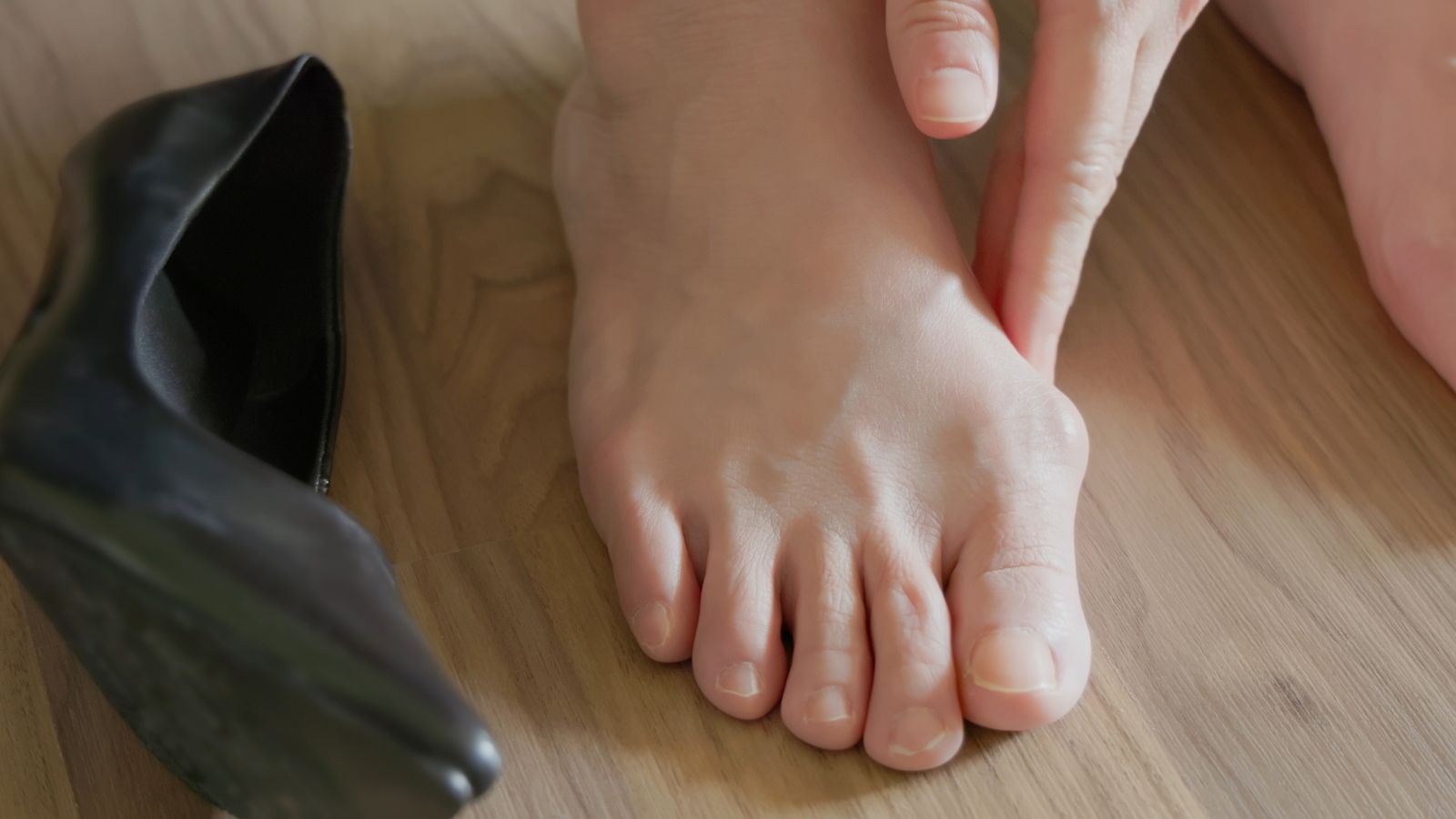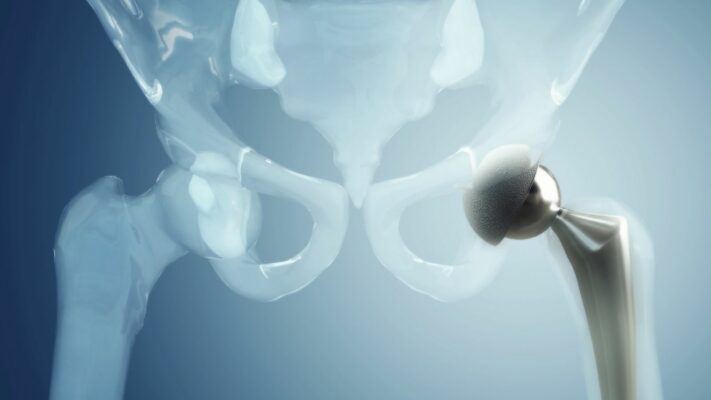Prof. Dr. Murat Demirel, one of the best orthopedic doctors treating hallux valgus (bunion) in Ankara, stands out with his many years of experience in the diagnosis and treatment of this orthopedic problem, which manifests itself with deformity of the big toe and a bony protrusion. Hallux valgus can develop due to genetic predisposition, improper footwear, or some joint diseases, and over time it can cause pain, difficulty walking, and a decrease in quality of life. Among the hospitals treating hallux valgus in Ankara, Prof. Dr. Demirel offers his patients personalized surgical or non-surgical treatment plans in centers equipped with advanced medical technology and high hygiene standards.
During the treatment process, depending on the degree of the deformity and the patient’s needs, insoles, special exercises, shoe modifications, or modern surgical techniques are applied. After hallux valgus treatment, with the doctor’s recommendations, the recovery process is ensured to be fast, safe, and permanent. In addition, transparent and up-to-date information about hallux valgus treatment prices in Ankara is provided, helping patients make informed decisions. You can also contact us immediately to protect your foot health, reduce your pain, and take comfortable steps by making an appointment.
| Disease Name | Hallux Valgus (Bunion) |
| Affected Area | Big toe (first metatarsophalangeal joint) |
| Main Causes | Genetic predisposition, use of narrow/tight shoes, flat feet, rheumatic diseases such as rheumatoid arthritis |
| Symptoms | Outward deviation of the big toe, swelling at the first toe joint, redness, pain, and difficulty wearing shoes |
| Risk Factors | Female gender, family history, high-heeled and pointed-toe shoes, joint laxity |
| Diagnostic Methods | Physical examination, foot radiograph (X-ray) to evaluate the angle of the deformity |
| Treatment Methods | Wide-toed shoes, orthopedic insoles, toe spacers, night splints, painkillers, physical therapy; surgical correction (osteotomy) in advanced cases |
| Need for Surgery | Applied in cases of severe deformity, persistent pain, decrease in quality of life, and lack of response to conservative treatment |
| Need for Physical Therapy | Recommended after surgery to accelerate recovery and maintain toe range of motion |
| Possible Complications | Persistent pain, infection, recurrence, nerve damage, stiffness or limited movement in the toe |
| Recovery Process | 6–12 weeks after surgery; gradual return to full weight-bearing and activity |
| Follow-up Requirement | Regular clinical check-ups and radiological follow-up if necessary are recommended |


Prof. Dr. Murat Demirel
Orthopedics and Traumatology Specialist
Orthopedics Specialist Prof. Dr. Murat Demirel was born in Ankara in 1974. He completed his primary education at Ankara Kavaklıdere Primary School and his secondary and high school education at Ankara Atatürk Anatolian High School. Dr. Demirel graduated from Ankara University Faculty of Medicine in 1998 and completed his residency in Orthopedics and Traumatology at Ankara Numune Training and Research Hospital, 1st Orthopedics and Traumatology Clinic, in 2004.
PhD
Ankara University Institute of Health Sciences
Specialization
Ankara Numune Training and Research Hospital, 1st Orthopedics Clinic
Medical School
Ankara University Faculty of Medicine
Yazı İçeriği
What Causes Hallux Valgus and Why is Hallux Valgus Treatment So Important?
Many people think that this protrusion on the foot is simply a bone growing outward. However, the situation is much more complex. Hallux valgus can be compared to a tent pole about to collapse. Your big toe and the long metatarsal bone behind it normally stand on a straight line, forming this pole. The ligaments and tendons around the joint act like ropes keeping the pole upright.
Improper footwear, especially narrow shoes that squeeze the toes together and high heels that constantly shift body weight forward, continuously push this tent pole sideways. Over time, the ropes on the inside (medial capsule) loosen and lengthen, while those on the outside (lateral capsule) shorten and tighten. As a result of this imbalance, the big toe can no longer stay straight and begins to lean toward the second toe. As the big toe collapses sideways, the metatarsal bone behind it spreads inward like a fan. The painful protrusion we call a “bunion” is the head of this inward-opening metatarsal bone.
Of course, shoes are not the only culprit. Your genetic heritage also plays an important role. If you have a family history of hallux valgus, you may have inherited a particular foot type (such as looser ligaments or a tendency toward flat feet). This makes your foot more vulnerable to this deformity. Just as some people have more sensitive skin to the sun, some people have a foot structure more prone to hallux valgus. Advancing age, rheumatic diseases, and certain neurological conditions can also increase this risk.
So why is hallux valgus treatment so important? Because when left untreated, this problem creates a domino effect.
Initially, it affects only the big toe, but over time it disrupts the mechanics and balance of the entire foot. The body’s weight can no longer be distributed properly on the foot. A large portion of the load shifts onto the smaller metatarsal bones (especially the second metatarsal), which are not designed for this. As a result, painful calluses develop under these bones and sharp, throbbing pain called “transfer metatarsalgia” occurs.
The big toe pressing against the second toe constantly may cause it to bend over time and turn into another deformity known as “hammer toe.” In advanced cases, the toes may even overlap. This makes finding suitable shoes impossible. The joint remaining in an abnormal position wears down the cartilage surfaces, eventually leading to painful joint arthritis (osteoarthritis). This is irreversible damage. Therefore, hallux valgus treatment is not only about relieving existing pain but also about breaking this domino effect and protecting the long-term health of your foot.
What Symptoms Indicate That Hallux Valgus Treatment is Needed?
Hallux valgus usually develops gradually, but some signs indicate the condition should be taken seriously and that consulting a specialist is necessary. If you are experiencing one or more of the symptoms below, this may be a sign of hallux valgus.
The most common symptoms are as follows:
- A visible bony bump at the base of the big toe, on the inner side
- Redness, tenderness, and swelling on this bump
- Pain that increases especially when wearing narrow shoes or standing for long periods
- Deep, aching pain inside the big toe joint
- The big toe leaning toward the second toe, even moving under or over it
- Deformities starting in the second and third toes (hammer toe)
- Painful callus formation under the foot, especially beneath the second metatarsal
- Limited movement and stiffness in the big toe joint
- Balance problems while walking
- Occasional numbness or tingling in the toes
- Increasing difficulty finding comfortable and suitable shoes
What is the Diagnostic Process for Hallux Valgus Treatment When I See a Doctor?
When you see an orthopedic specialist with complaints of hallux valgus, a systematic evaluation process is followed to establish the correct diagnosis and determine the most suitable treatment. This process begins with a conversation with you and ends with imaging techniques.
First, we listen to you. Your history is very valuable to us. When did your pain start? What activities make it worse? Does anyone in your family have a similar problem? What are your expectations from the treatment? The answers to such questions give us the first clues about the origin of the problem and how much it affects your quality of life.
Then comes the physical examination. At this stage, we may ask you to stand and walk. We carefully examine the overall structure of your feet, the alignment of your toes, the size and flexibility of the bunion, and the joint’s range of motion. We check for tenderness or signs of inflammation and assess the relationship of your big toe with the other toes (whether it goes under or over them). This examination provides important information about the nature of the deformity.
The final and most critical step is imaging. We usually request X-rays taken while standing, that is, when your body weight is fully on your feet. This is very important because your foot appears differently when not bearing weight (sitting or lying). To accurately see the real extent of the deformity and the relationship between the bones, we need the image of the foot under load, when it is working. This is like testing a bridge’s strength by driving trucks over it; the bridge’s real behavior only appears under load.
On these X-rays, we make technical measurements using a ruler and protractor. These angles allow us to objectively express the severity of the deformity with numbers. We measure how much your big toe has deviated sideways (Hallux Valgus Angle – HVA) and how much the metatarsal bones have separated (Intermetatarsal Angle – IMA). These measurements guide us in determining the most appropriate treatment method, and especially in deciding which technique to use if surgery is necessary. Whether there is arthritis in the joint can also be clearly seen in these films. All this data combined creates a personalized treatment plan for you.
Contact us for detailed information and an appointment!
Will Non-Surgical Hallux Valgus Treatments Relieve My Pain?
Surgery is not always our first choice in hallux valgus treatment. Especially when the deformity is at an early stage and the pain is not very severe, our goal is to control your symptoms with non-surgical (conservative) methods. To be honest: these methods will not magically correct the underlying bone deformity. The aim is to reduce pain, relieve pressure on the bunion, and slow the progression of the deformity.
Non-surgical treatment options include:
- Wearing wide, soft, and low-heeled shoes
- Protective silicone pads placed over the bunion bump
- Toe spacers placed between the big toe and the second toe
- Night splints that hold the toe straight during sleep
- Custom-made insoles that support foot mechanics
- Physical therapy exercises to maintain joint flexibility
- Anti-inflammatory medications during pain flare-ups
- Avoiding activities that trigger pain (such as standing for long periods)
These methods can be particularly beneficial for patients with flexible deformities and mild complaints. Choosing the right footwear is the most important part of treatment. Shoes made of soft leather with a wide front, almost like giving your toes a home-like comfort, will immediately reduce the pressure on the bunion. Toe spacers and night splints can passively keep the toe in the correct position, relieving strained soft tissues. If hallux valgus is accompanied by flatfoot, special insoles that support the arch of the foot can help distribute pressure more evenly while walking, reducing pain both in the big toe and in other areas.
Physical therapy helps preserve joint mobility and strengthen your foot muscles with customized exercise programs. However, it should be remembered that the success of these methods depends on your compliance and willingness to adopt lifestyle changes. If, despite these conservative approaches, your pain continues to interfere with your daily life and your quality of life decreases, then it is time to consider surgery as a more permanent solution.
When Does Surgery Become Inevitable for Hallux Valgus Treatment?
The decision for hallux valgus surgery is usually a matter of quality of life. Rather than the angle seen on the X-ray or the millimetric size of the bump, it depends on how much this condition affects your life. If you have tried all non-surgical methods but still struggle in daily life, surgery becomes inevitable and the best option. Surgery is not just for cosmetic correction but is a medical intervention to relieve pain and restore function.
So, when is the time to go under the knife?
Valid reasons to consider surgery usually include:
- Persistent and chronic pain
- Difficulty in daily activities (walking, climbing stairs)
- Shoes becoming unbearable to wear
- Visible progression of the deformity
- Problems starting in other toes (hammer toe, calluses, etc.)
- Being deprived of enjoyable activities such as sports or hobbies
If you feel pain even when taking your first step in the morning, if simple activities such as grocery shopping feel difficult, if you cannot play with your grandchildren in the park, or if you feel hopeless because you cannot find suitable shoes in stores, it is time to seriously consider surgery.
The aim is not only to relieve your pain but also to restore lost function and vitality. This decision should be made jointly based on your expectations and your surgeon’s assessment. If the burden of the symptoms outweighs the potential risks and recovery of surgery, then surgery is the most effective way to permanently solve this structural problem.
What Different Techniques Are Used in Hallux Valgus Surgery?
There is no “one-size-fits-all” approach in hallux valgus treatment. Every patient’s deformity is unique, like a fingerprint. Therefore, there are over 150 different techniques in the surgeon’s toolbox to solve this problem. Which method will be chosen depends on the severity of the deformity, its flexibility, whether there is arthritis in the joint, and the underlying cause, all determined individually. The main principle of the surgery is to bring the collapsed tent pole (as mentioned earlier) back into a straight line and stabilize it.
Surgical techniques can generally be grouped into two main categories:
Group 1: Surgeries That Change Bone Position (Osteotomies)
This is the most common method group. Osteotomy is the controlled cutting of the bone, repositioning it correctly, and then fixing it in place with small, special screws or plates.
In mild and moderate deformities, correction is usually made from the end of the first metatarsal bone near the big toe (such as Chevron/Austin osteotomy). It is like making a “V”-shaped cut at the bone head and shifting it sideways.
If the deformity is more severe and the separation between the metatarsals is greater, the correction must be made more radically. In this case, the bone cut is made closer to the base of the metatarsal bone (proximal osteotomies). This provides a stronger and more comprehensive correction. “Z”-shaped cuts, such as Scarf osteotomy, allow both shifting and rotation, enabling three-dimensional correction.
In addition to these bone corrections, the tightened ligaments around the joint are almost always loosened (soft tissue release), and the loosened joint capsule is tightened. This is essential for the permanence of the correction. Sometimes, even after all these procedures, there may still be a slight tilt in the big toe itself. In such cases, as a final touch, a small wedge is removed from the big toe’s own bone (proximal phalanx) to achieve complete straightness (Akin osteotomy).
Group 2: Surgeries That Stabilize the Damaged Joint (Arthrodesis / Joint Fusion)
In some cases, especially when there is advanced arthritis in the big toe joint, it is not meaningful to try to preserve the joint. An arthritic joint is both painful and already dysfunctional. In such cases, joint fusion (arthrodesis) is preferred.
In this procedure, the worn cartilage surfaces are completely cleaned, and the big toe is permanently fixed to the metatarsal bone in the most ideal and functional position for walking, using screws and/or plates. This eliminates the movement of the big toe joint but provides a highly effective and permanent solution by completely eliminating pain. It is considered the gold standard, especially in patients with rheumatoid arthritis, those who have undergone failed surgeries, or elderly patients with severe deformities.
Which technique or combination of techniques is best for you will be decided by your surgeon after detailed examination and radiological evaluation.
What is Minimally Invasive Hallux Valgus Surgery Known as “Closed” Surgery?
Traditional hallux valgus surgeries require an incision of about 3–6 cm to correct the deformity, whereas the increasingly popular Minimally Invasive Surgery (MIS), commonly known as “closed surgery,” approaches this problem in a very different way. This technique is like fixing a problem inside a house by entering through the keyhole instead of opening the entire door.
In minimally invasive surgery, instead of making a large incision on the skin, the surgeon makes only a few small holes about 2–3 millimeters long. Through these holes, a special instrument with a high-speed rotating miniature burr is inserted. During surgery, the surgeon follows what is being done inside on a screen with the help of a device called fluoroscopy, which provides real-time X-ray imaging. Under this guidance, bone cuts (osteotomies) are performed with these miniature instruments with almost no damage to the underlying muscles, vessels, and nerves. After the bone is placed in the correct position, it is fixed in its new location with special screws inserted through these small holes.
In short, the same bone correction performed in open surgery is achieved with much less tissue trauma. This approach offers many potential benefits for the patient.
Advantages of minimally invasive surgery include:
- Less postoperative pain
- Faster recovery process
- Smaller and more aesthetic scars
- Lower risk of infection
- Less bleeding
- Usually shorter hospital stay
However, this technique is not suitable for every patient. The type and severity of the deformity and the patient’s bone structure determine whether this method can be chosen. In addition, minimally invasive surgery requires special equipment and a high level of experience, making it a technique with a learning curve.
Considerations when deciding whether this method is right for you include:
- The surgeon’s experience and training in this technique
- The deformity not being very severe or complex
- No advanced arthritis in the joint
- Greater exposure to X-ray radiation during surgery
My Child Has a Bump on the Foot – How is Hallux Valgus Treated in Children?
If you notice a bunion on your child’s or teenager’s foot, it is very natural to feel concerned. This condition, known as “Juvenile Hallux Valgus,” requires a very different approach than in adults. The main difference here is that your child’s skeletal system is still developing, and the “growth plates” (physes) at the ends of their bones, which are responsible for growth, are still active.
Your child’s bones can be compared to a young sapling that is still growing. Any incorrect intervention can negatively affect its future growth. Therefore, our main philosophy in treating hallux valgus in children is to adopt the most conservative and patient approach possible.
Main Differences in Treatment Approach
Our primary goal is to avoid surgery as much as possible. The treatment plan includes the following steps:
Observation and Follow-up: We regularly monitor whether the deformity is progressing.
Shoe Modification: Ensuring your child wears shoes with a wide and flexible front that do not put pressure on the toes is the most important step.
Insole Support: If your child also has flat feet, special insoles supporting the arch of the foot can improve walking mechanics and reduce pain.
Activity Guidance: We recommend avoiding activities that increase pain and guide the family on exercises to strengthen foot muscles.
Contact us for detailed information and an appointment!
Frequently Asked Questions
What is hallux valgus and how does it develop?
Hallux valgus is the deviation of the big toe outward, towards the other toes, accompanied by a bony bump (bunion) at the base of the toe. Genetic predisposition, improper footwear, high heels and narrow-toed shoes, flatfoot, or rheumatic diseases often play a role in its development.
What are the symptoms?
The main symptoms are a bony bump at the base of the big toe, pain, redness, difficulty wearing shoes, foot fatigue, and in advanced cases, callus formation under the big toe. Over time, the big toe may overlap with the other toes.
Who is more likely to have it?
Hallux valgus is more common in women than in men. The risk is higher in those with a family history of bunions, people with wide or flat feet, and those who frequently wear tight and high-heeled shoes.
How is it diagnosed?
Diagnosis is usually made through patient complaints and a physical examination while standing. An X-ray of the foot is taken to clearly measure the angle of the big toe and the severity of the deformity.
What are the treatment methods?
In the early stages, wide-toed orthopedic shoes, silicone toe spacers, night splints, and pain relief creams are recommended. If pain persists and the deformity progresses, surgical treatment (bunion surgery) is considered.
Is non-surgical recovery possible?
In early and mild cases, proper shoe choice and toe spacers can relieve symptoms. However, in advanced deformities, due to changes in bone structure, full recovery is only possible through surgery.
How is hallux valgus surgery performed?
Surgery is usually performed under local or general anesthesia. Bone correction and soft tissue balancing are applied to restore the big toe to its normal position. After surgery, patients can usually start walking soon, and the recovery process generally takes 6–8 weeks.
Is there a risk of recurrence after surgery?
With the correct surgical technique and proper postoperative care, the risk of recurrence is quite low. However, in individuals with anatomical predisposition or those who continue to wear improper footwear, the bunion may reappear.
How does a bunion affect daily life?
Difficulty wearing shoes, constant pain, discomfort while walking, and cosmetic concerns negatively affect daily life. In advanced cases, the big toe may overlap with other toes, causing serious foot deformities.
What can be done to prevent hallux valgus?
Wearing wide-toed orthopedic shoes, avoiding high heels as much as possible, and doing regular foot-strengthening exercises can help prevent the development of hallux valgus.




